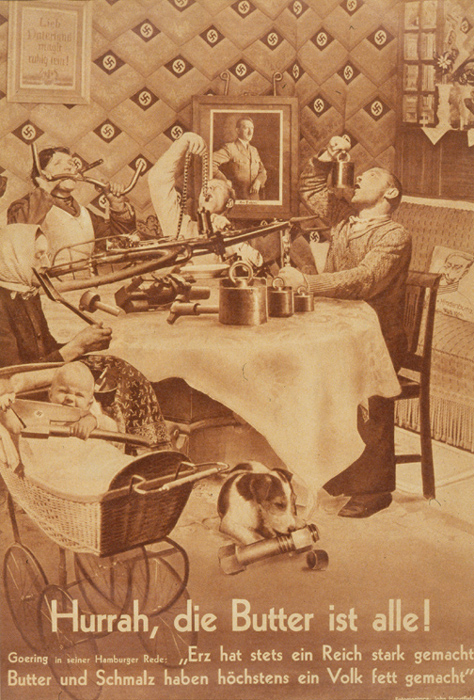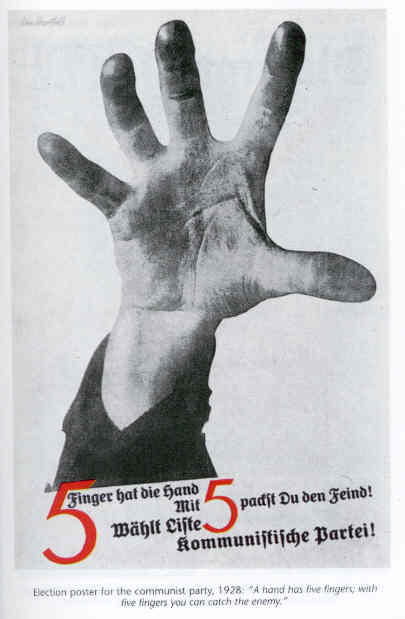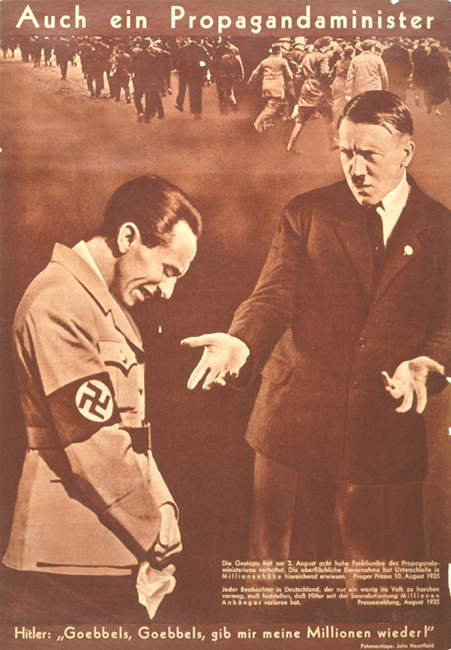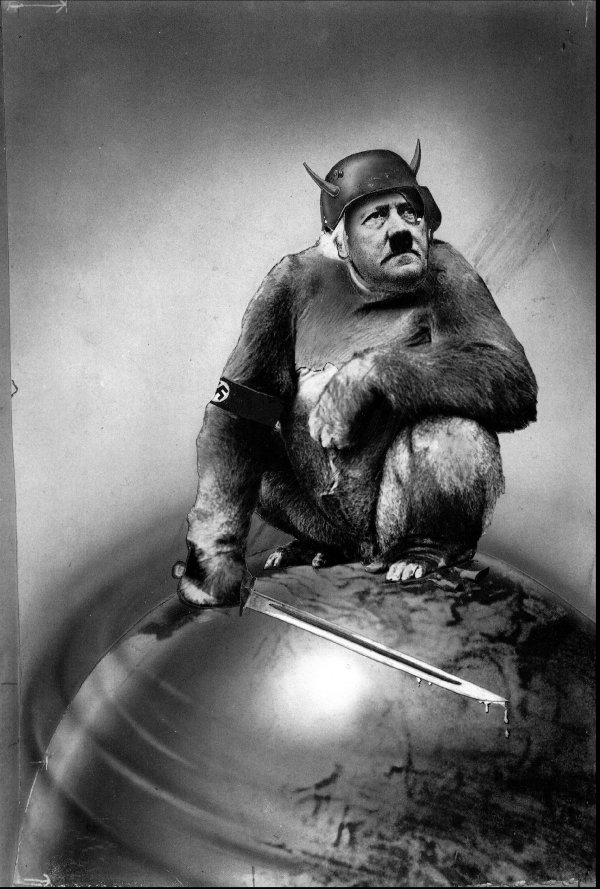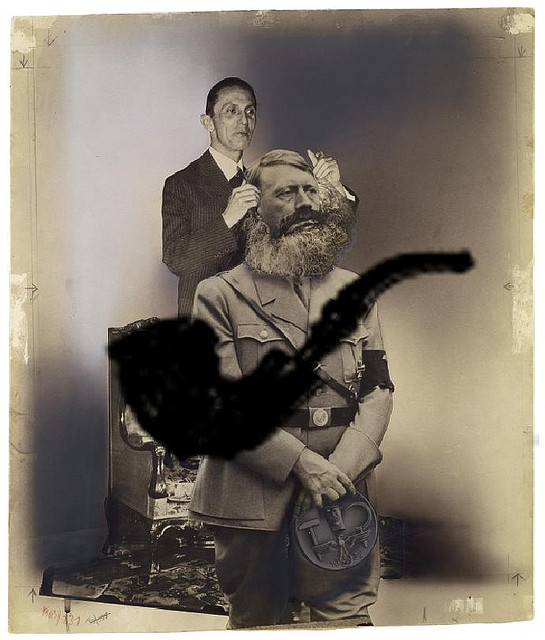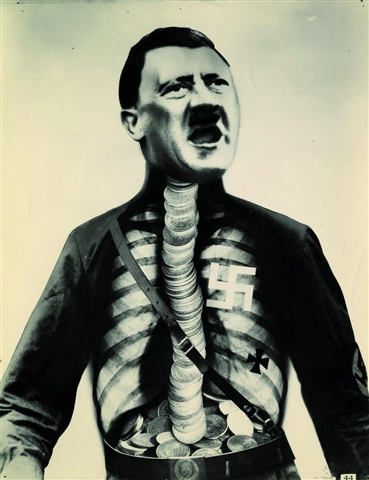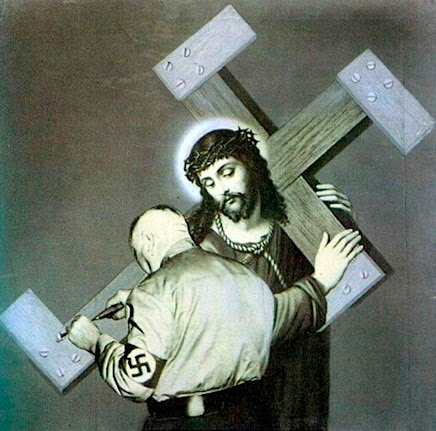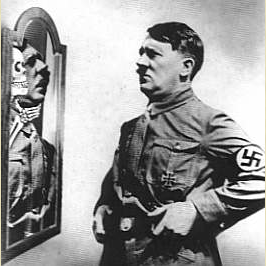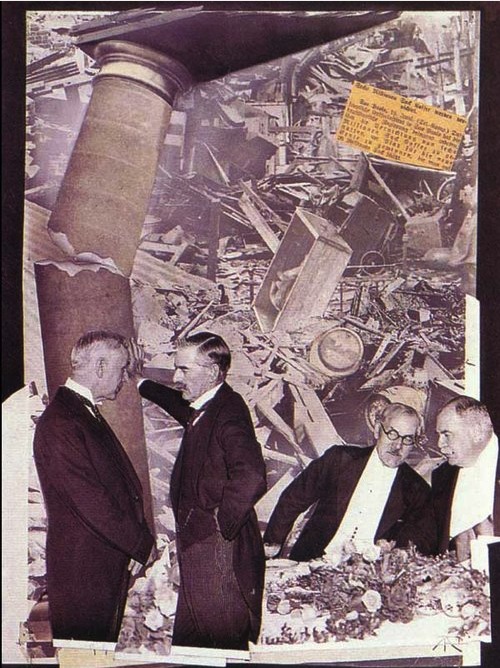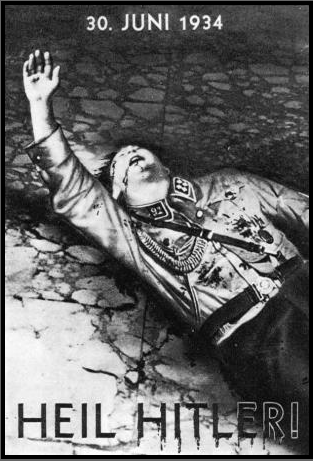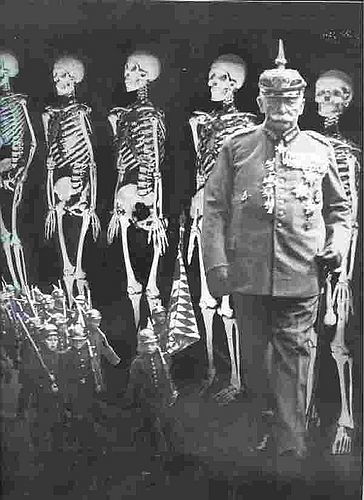<Back to Index>
- Photomontage Artist John Heartfield (Helmut Herzfeld), 1891
PAGE SPONSOR

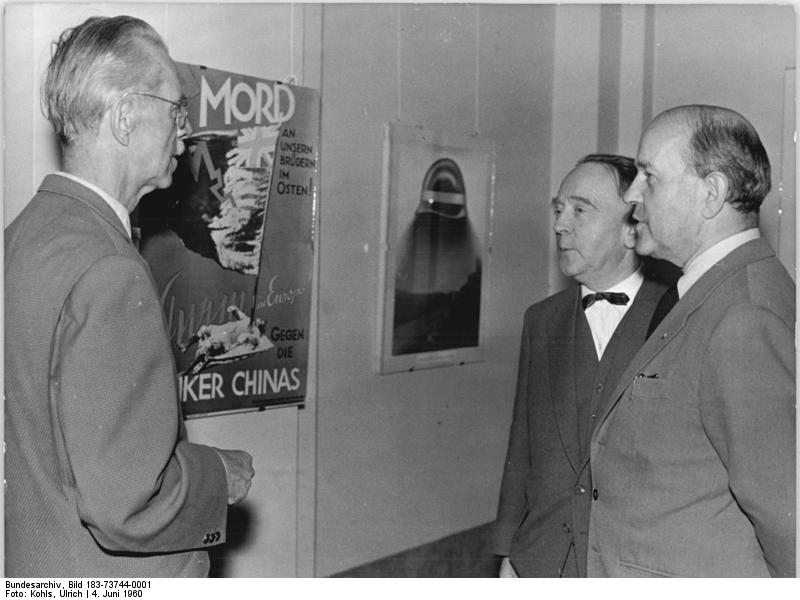
John Heartfield (19 June 1891, Berlin – 26 April 1968, East Berlin) is the anglicized name of the German photomontage artist Helmut Herzfeld. He chose to call himself Heartfield in 1916, to criticize the rabid nationalism and anti - British sentiment prevalent in Germany during World War I.
In 1918 Heartfield joined the Berlin Dada group and the Communist Party of Germany. He would turn out to be highly active in the Dada movement, organizing the First International Dada Fair in Berlin in 1920. In 1919, he was dismissed from the Reichswehr film service on account of his support for the strike that followed the assassination of Karl Liebknecht and Rosa Luxemburg. With George Grosz, he founded Die Pleite, a satirical magazine. After meeting Bertolt Brecht in 1924, who was to have an influence on his art, Heartfield developed photomontage into a form of political and artistic expression. He worked for two communist publications: the daily Die Rote Fahne and the weekly Arbeiter - Illustrierte - Zeitung (AIZ), the latter of which published the works for which Heartfield is best remembered.
In 1933, after the National Socialists came to power in Germany, Heartfield relocated to Czechoslovakia, where he continued his photomontage work for the AIZ (which was published in exile); in 1938, fearing a German takeover of his host country, he left for England, living in Hampstead. He settled in East Germany and Berlin after World War II, in 1954, and worked closely with theater directors such as Benno Besson and Wolfgang Langhoff at Berliner Ensemble and Deutsches Theater.
In 1967 he visited Britain and began preparing a retrospective exhibition of his work, "photomontages", which was subsequently completed by his widow Gertrude and the Deutsche Akademie der Künste, and shown at the ICA in London in 1969.
In 2005, Tate Britain held an exhibition of his photomontage pieces.
His photomontages satirizing Adolf Hitler and the Nazis often subverted Nazi symbols such as the swastika in order to undermine their propaganda message.
One of his more famous pieces, made in 1935 entitled Hurrah, die Butter ist Alle! (English:Hurray, the butter is gone!) was published on the frontpage of the AIZ in
1935. A parody of the aesthetics of propaganda, the photomontage shows a
family at a kitchen table, where a nearby portrait of Hitler hangs and
the wallpaper is emblazoned with swastikas. The family — mother, father,
old woman, young man, baby, and dog — are attempting to eat pieces of
metal, such as chains, bicycle handlebars, and rifles. Below, the title
is written in large letters, in addition to a quote by Hermann Göring during food shortage. Translated, the quote reads: "Iron has always made a nation strong, butter and lard have only made the people fat".
Hurrah, die Butter ist Alle! served as the inspiration behind the song "Mittageisen" by Siouxsie and the Banshees; the song was re-recorded in German and released as a single with Heartfield's work as the cover art. The Swiss darkwave band Mittageisen (1981 - 1986) called themselves after this song title.
The band Blurt recorded a song called "Hurrah! Die Butter Ist Alle" on their 1986 album "Poppycock".
The Heartfield piece The Hand has 5 Fingers with its original text: "5 fingers make a hand! With these 5 grab the enemy!", was referenced by alternative metal band System of a Down. A text printed on the back of the album System of a Down reads: "The hand has five fingers, capable and powerful, with the ability to destroy as well as create". It should be noted however that this concept is not confined to Heartfield's work and is present, for example, in the symbolism of the raised fist.
The British hardcore punk band Discharge used Heartfield's work "Peace and Fascism" for the cover artwork of their compilation "Never Again".
Laibach, a Slovenian avant garde act, often admits being influenced by Heartfield's art. They have recorded the song Herzfelde, apparently named after him.
The image also appears on the 50th anniversary edition of The Gutenberg Galaxy by media theorist Marshall McLuhan.
